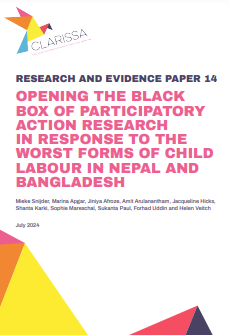By Trine Filges, Elizabeth Bengtsen, Edith Montgomery, Malene Wallach Kildemoes
Background
The number of people fleeing persecution and regional conflicts is rising. Western countries have applied increasingly stringent measures to discourage those seeking asylum from entering their country, amongst them, to confine asylum seekers in detention facilities. Clinicians have expressed concerns over the mental health impact of detention on asylum seekers, a population already burdened with trauma, advocating against such practices.
Objectives
The main objective of this review is to assess evidence about the effects of detention on the mental and physical health and social functioning of asylum seekers.
Search methods
Relevant literature was identified through electronic searches of bibliographic databases, internet search engines, hand searching of core journals and citation tracking of included studies and relevant reviews. Searches were performed up to November 2023.
Selection criteria
Studies comparing detained asylum-seekers with non-detained asylum seekers were included. Qualitative approaches were excluded.
Data collection and analysis
Of 22,226 potential studies, 14 met the inclusion criteria. These studies, from 4 countries, involving a total of 13 asylum-seeker populations. Six studies were used in the data synthesis, all of which reported only mental health outcomes. Eight studies had a critical risk of bias. Meta-analyses, inverse variance weighted using random effects statistical models, were conducted on post-traumatic stress disorder (PTSD), depression, and anxiety.
Main results
A total of 27,797 asylum seekers were analysed. Four studies provided data while the detained asylum seekers were still detained, and two studies after release. All outcomes are reported such that a positive effect size favours better outcomes for the non-detained asylum seekers. The weighted average SMD while detained is 0.45 [95% CI 0.19, 0.71] for PTSD and after release 0.91 [95% CI 0.24, 1.57]; for anxiety 0.42 [95% CI 0.18, 0.66] and for depression 0.68 [95% CI 0.10, 1.26] both while detained. Based on single-study data, the SMD was 0.60 [95% CI 0.02, 1.17] for depression and 0.76 [95% CI 0.17, 1.34] for anxiety, both after release. Three studies (one study each) reported outcomes related to psychological distress, self-harm and social well being. Psychological distress favoured the detained but was not significant; whereas both effect sizes on self-harm and social wellbeing indicated highly negative impacts of detention; in particular, the impact on self-harm was extremely high. The OR of self-harm was reported separately for asylum seekers detained in three types of detention: Manus Island, Nauru and onshore detention. The ORs were in the range 12.18 to 74.44; all were significant.
Authors' conclusions
Despite similar post-migration adversities amongst comparison groups, findings suggest an independent adverse impact of detention on asylum seekers' mental health, with the magnitude of the effect sizes lying in an important clinical range. These effects persisted beyond release into the community. While based on limited evidence, this review supports concerns regarding the detrimental impact of detention on the mental health of already traumatised asylum seekers. Further research is warranted to comprehensively explore these effects. Detention of asylum seekers, already grappling with significant trauma, appears to exacerbate mental health challenges. Policymakers and practitioners should consider these findings in shaping immigration and asylum policies, with a focus on minimising harm to vulnerable populations.
Campbell Systematic Reviews, Volume 20, Issue 3
September 2024





















